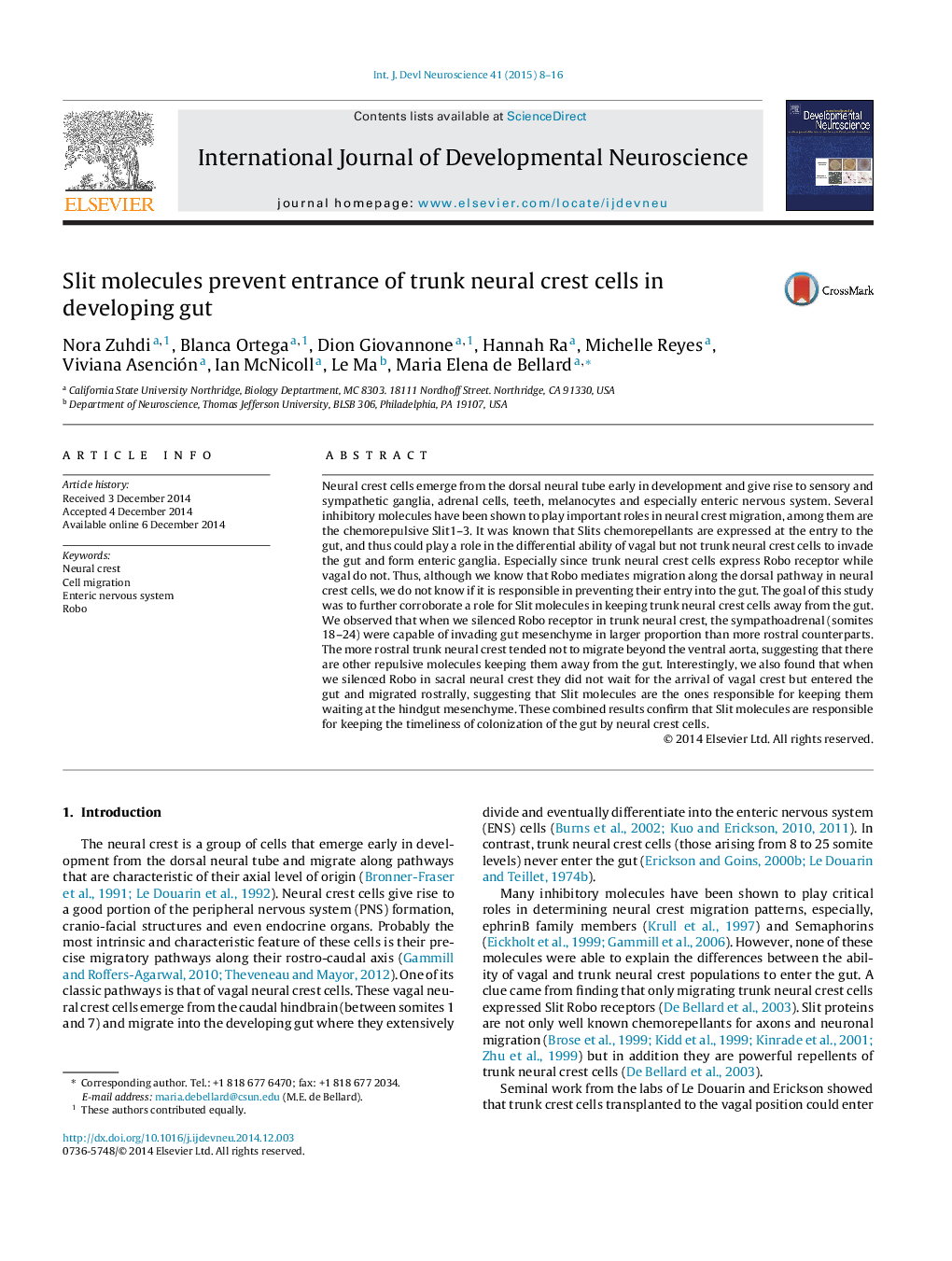| Article ID | Journal | Published Year | Pages | File Type |
|---|---|---|---|---|
| 5893859 | International Journal of Developmental Neuroscience | 2015 | 9 Pages |
Neural crest cells emerge from the dorsal neural tube early in development and give rise to sensory and sympathetic ganglia, adrenal cells, teeth, melanocytes and especially enteric nervous system. Several inhibitory molecules have been shown to play important roles in neural crest migration, among them are the chemorepulsive Slit1-3. It was known that Slits chemorepellants are expressed at the entry to the gut, and thus could play a role in the differential ability of vagal but not trunk neural crest cells to invade the gut and form enteric ganglia. Especially since trunk neural crest cells express Robo receptor while vagal do not. Thus, although we know that Robo mediates migration along the dorsal pathway in neural crest cells, we do not know if it is responsible in preventing their entry into the gut. The goal of this study was to further corroborate a role for Slit molecules in keeping trunk neural crest cells away from the gut. We observed that when we silenced Robo receptor in trunk neural crest, the sympathoadrenal (somites 18-24) were capable of invading gut mesenchyme in larger proportion than more rostral counterparts. The more rostral trunk neural crest tended not to migrate beyond the ventral aorta, suggesting that there are other repulsive molecules keeping them away from the gut. Interestingly, we also found that when we silenced Robo in sacral neural crest they did not wait for the arrival of vagal crest but entered the gut and migrated rostrally, suggesting that Slit molecules are the ones responsible for keeping them waiting at the hindgut mesenchyme. These combined results confirm that Slit molecules are responsible for keeping the timeliness of colonization of the gut by neural crest cells.
Graphical abstractThe graphical abstract summarizes what we know about Slit/Robo interaction in neural crest migration into the gut: at vagal levels neural crest cells enter the gut by migrating through area without Slit expression. Trunk neural crest cells before somite 18 are repelled by Slits as well as another yet unknown factor(s). The trunk neural crest between somite 17 and 24 (sympathoadrenal) is kept away from the gut by Slit molecules as well as sacral crest is prevented from populating the gut before vagal crest arrives by Slit expression along the gut mesenchyme.Download high-res image (105KB)Download full-size image
